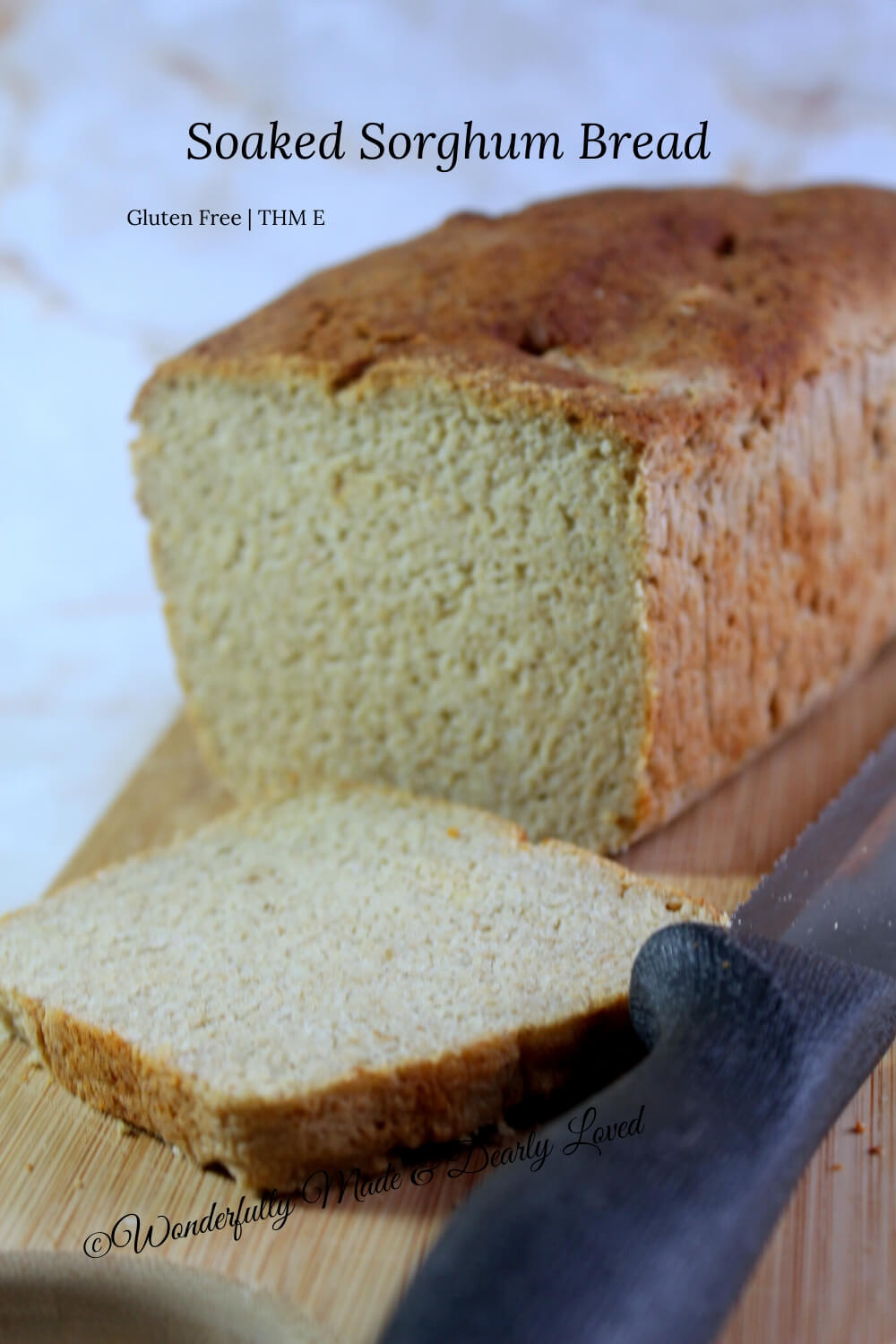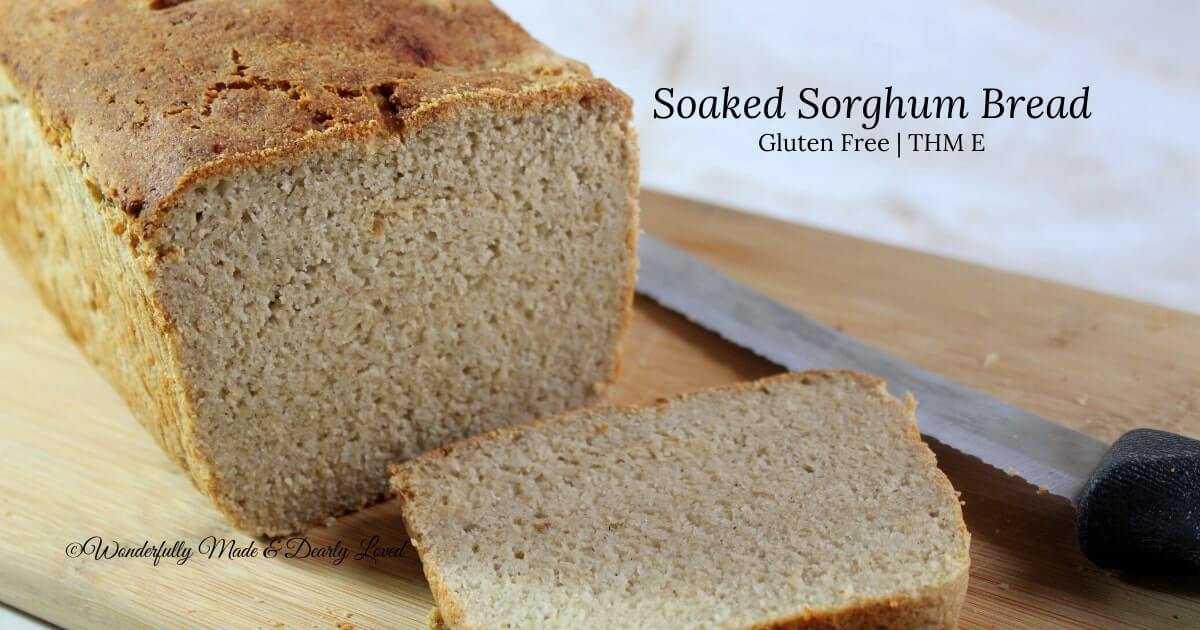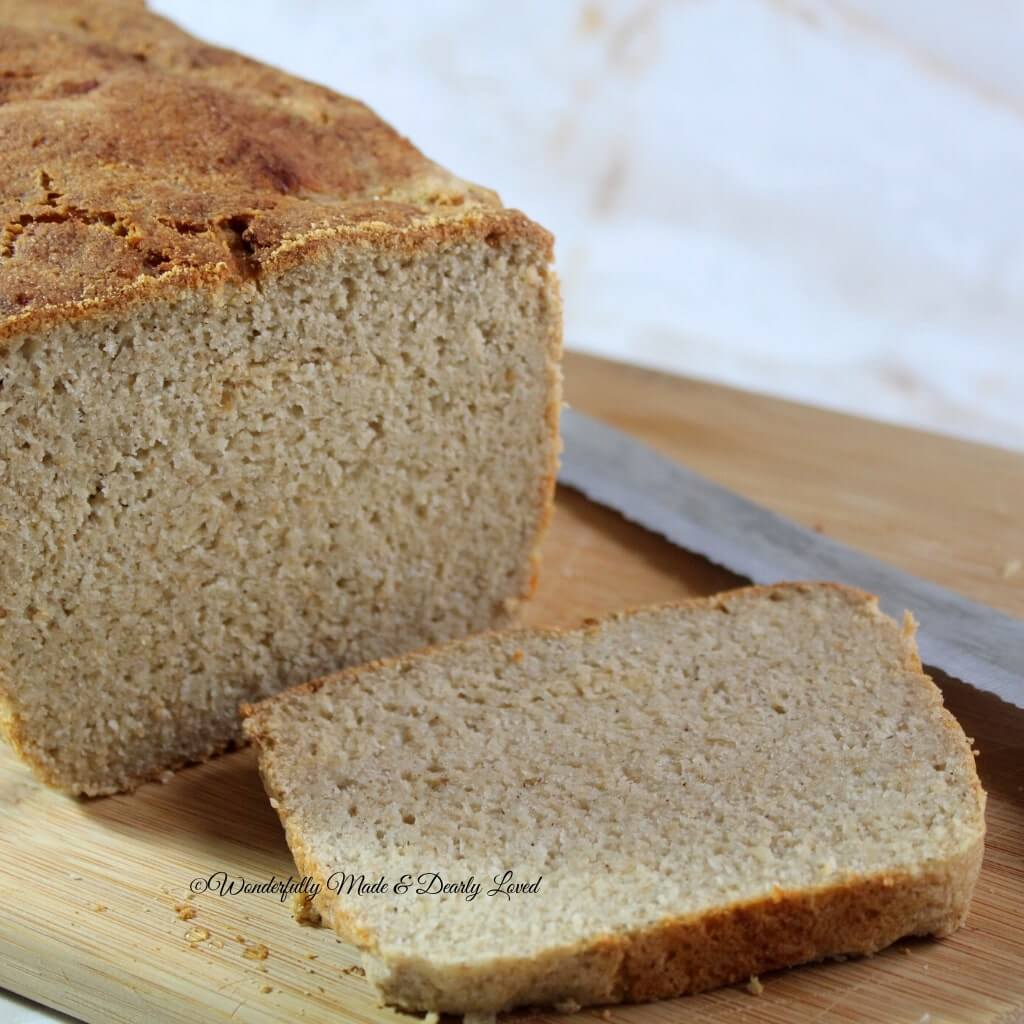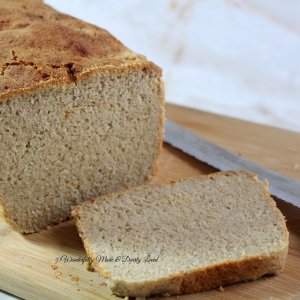 I am super happy with how this soaked sorghum bread turned out. I love the fact that it is naturally gluten free and that it fits within my healthy lifestyle.
I am super happy with how this soaked sorghum bread turned out. I love the fact that it is naturally gluten free and that it fits within my healthy lifestyle.
Being able to make a naturally gluten free, low fat loaf of bread which is perfect for sandwiches, toast and more is awesome.
This post may contain affiliate links to Amazon or other programs. I do earn a small commission from the sales made through these links; however your price never changes. You can see my Full Disclosure here.
It has been pretty crazy since we have had to be under a shelter in place order due to the COVID-19 outbreak.
With stores having empty shelves and having to find alternatives to normally store bought items, I thought that it would be a good time for me to hunker down at home and experiment with some soaked breads that use ingredients that I either had on hand or that were not wiped out at my local grocery stores.
Why I Used Sorghum Flour
Sorghum flour is naturally gluten free. It also is used to replace wheat flour in some bread recipes in a 1 to 1 ratio. I wanted a flour that would work well in a soaked flour recipe that did not contain gluten. Many gluten free flours tend to gel when you add liquids or they may spike your blood sugar, which we are trying to avoid.
Adding Brown Rice Flour
Interestingly, sorghum can be a bit heavy in baking so I mixed it with some home ground brown rice flour, but you can also buy brown rice flour that has already been ground. I ground mine in my coffee grinder to a fine powder which is super budget friendly.
Why I Mixed Gluten Free Flours For This Soaked Sorghum Bread
Each flour has different properties in baking, some are lighter than others. Sorghum is a bit heavy where brown rice flour tends to be lighter. By mixing them together it lends a more traditional texture to this bread.
How To Soak Your Flours
Soaking your flours in an acidic medium helps to make them more digestible. Your body will assimilate more of the mineral nutrients when you soak your flours and grains.
Using Apple Cider Vinegar
I used 2 Tablespoons of Apple Cider Vinegar with 1 cup of water to soak my flours for a 24 hour period, so that we would have an on plan gluten free bread option that uses easily obtained ingredients. I love that this also fits within the guidelines of the Trim Healthy Mama Plan.
Cultured Dairy
You can use cultured dairy such as yogurt or kefir to soak your grains in place of the apple cider vinegar. Personally, I have used 1/2 cup of yogurt mixed with 1/2 cup unsweetened almond milk or 1 cup of kefir in the past.

Binders Are Used To Replace Gluten
Xanthan Gum
I did use xanthan gum in this recipe because it helps to build the structure of this bread. Gluten is the protein in wheat that builds strands that help a bread to rise and hold its shape. The xanthan gum is partially responsible for the structure in this soaked sorghum bread.
Guar Gum
Because xanthan gum is derived from corn some people may find that they are sensitive to it. Guar gum is bean based and can be used to replace xanthan gum in a one to one ratio.
Whole Psyllium Husk Flakes
I also used THM Whole Psyllium Husks to help with the structure and to help with the wonderful crumb of this bread. By combining the two binders this soaked sorghum bread has a traditional texture versus the age old problem of gluten free baked goods of a gummy texture.
If You Have A Gum Sensitivity
There is a way to work around the use of gums in gluten free baking. You technically only need to use one of these binders, so if you have a sensitivity to gums you can just leave it out and increase the psyllium to 4 teaspoons.
Baking Tip
By mixing your psyllium into the yeast water it helps to capture more of the gases released from the yeast as it expands.
About The Use of Baobab Powder In Bread
Over the past couple of years I have found that adding a teaspoon or two of baobab powder to my baked goods helps with self life. Baobab is extremely high in vitamin C and naturally fights the occurrence of mold in baked goods that are stored at room temperature.
It is also high in natural fiber which aids in digestion and helps to blunt spikes in your blood sugar.
Because baobab acts like a starch in baking it also helps to lighten the crumb of your baked goods. The biggest drawback is that you really need to be careful with how much you are adding as it can lead to frequent trips to the bathroom if you use too much.
 You May Also Like These Bread Recipes
You May Also Like These Bread Recipes
Air Fryer Classic Sandwich Buns
Soaked Sorghum Bread Recipe
- Serves: 10
- Serving size: 2 slices
- Calories: 212
- Fat: 3g
- Carbohydrates: 41g
- Sodium: 387mg
- Fiber: 5g
- Protein: 5g
- Cholesterol: 0mg

- 2 cups sorghum flour
- 1 cup brown rice flour
- 2 Tablespoons THM Baobab Boost Powder
- 1 teaspoon THM Mineral Salt
- 2 teaspoons xanthan gum
- 1 Tablespoon extra virgin olive oil
- 2 Tablespoons apple cider vinegar
- 2 Tablespoons honey
- 2 teaspoons THM Whole Husk Psyllium Flakes
- 1⅓ cups water (divided)
- 2½ teaspoons active dry yeast
- ¼ cup golden flax meal
- 1 Tablespoon baking powder
- Combine sorghum flour, brown rice flour, baobab boost powder, mineral salt and xanthan gum in bowl of your stand mixer, whisk to combine well.
- Add olive oil and 1 cup of warm water plus 2 TBS apple cider vinegar to the flour mixture and use the lowest setting to mix everything together well. Cover and allow to sit for 24 hours.
- The next day.
- Warm ⅓ cup water to 90-115 degrees, add honey, yeast and psyllium husk. allow to proof for 5 minutes.
- While yeast is proofing, add golden flax and baking powder to the flour mixture and using the next to lowest setting on your mixer combine with the soaked flour. After yeast mixture has proofed, pour in a steady stream into the mixer bowl using the lowest setting. Then move up to the next speed and kneed your dough for about 3-5 minutes.
- Line your bread pan with parchment and spray with coconut oil spray.
- Place dough into your bread pan and smooth the top with wet fingers. Allow to rise for 60 minutes
- Heat your oven to 400 degrees, place bread pan into the oven and lower the temperature to 350 degrees and bake for 30 minutes
- Allow bread to cool for 10 minutes in the pan, then remove to cooling rack and allow to cool fully before slicing.
- Preheat air fryer to 400 degrees. place bread pan on the lowest shelf position and lower the temperature to 325 degrees. Allow to bake for 20 minutes.
You can proof your bread in your air fryer ~ see how to do this in the blog post.




Jackie O says
Which attachment do you use for mixing with the stand mixer? The dough hook, paddle, or whisk? TIA
Judy says
I used my dough hook 🙂
Natalie says
Hi, I’m so sorry to ask on this post, but I have a question about your peanut butter brownie bars recipe and there is no comment form on that page. I’m wondering if you could share what sweetener you used for those? I’m assuming liquid for binding purposes. Thank you for your help!
Judy says
I normally use THM Super Sweet or Pyure in baking 🙂
Terri Lenhart says
I’m really excited about this recipe. It’s been several years since I’ve been able to enjoy bread.
I do have several other sensitivities, besides gluten. One of these is psyllium. What do you think about increasing the baobab and xanthan a bit, in order to omit the psyllium? My tummy handles baobab well, thankfully! Also, could gluccie sub for xanthan?
Martha Davolt says
Can the baobab boost powder be left out?
Judy says
yes it can
Becky says
Hi there I’d love to try this bread without yeast, could I up the baking powder or add baking soda? I’m allergic to bakers yeast 🤦♀️
Judy says
I haven’t tried it that way
helga says
The first time i made this i thought i forgot the first cup of water so actually added a total of 2 and 1/3 cups of water ….making it again and not sure how it will hold together with 1 cup less of water….. is 1 and 1/3 cup water total recipe enough?
Michelle L. says
Have you ever let this soak for longer than 24 hours and it still came out?
Judy says
no I haven’t